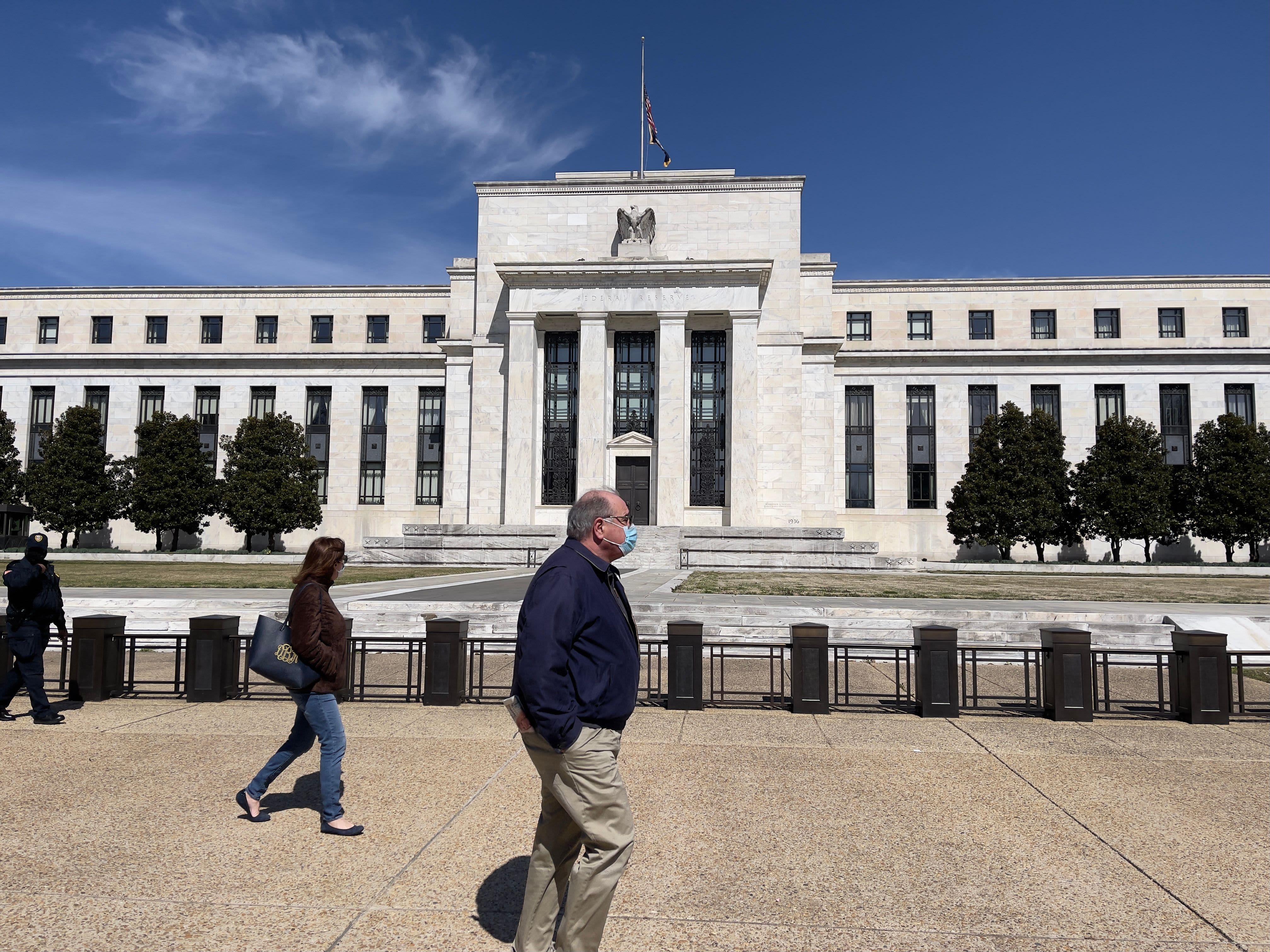The Federal Reserve is expected to raise rates Wednesday as they look to contain soaring inflation.
The first quarter-point increase in the federal funds rate in three years will likely lay the groundwork for additional hikes to follow.
“The cumulative effect of rate hikes is what is really going to have an impact on the economy and household budgets,” said Greg McBride, Bankrate.com’s chief financial analyst.
Typically, as borrowing costs rise, consumers will spend less, ultimately cooling the pressure on prices. But if you’re concerned about what this means for your own credit card debt, auto loan, mortgage rate and student loan tab, here’s a breakdown of what may happen.
Credit cards
For starters, most credit cards have a variable rate, which means there’s a direct connection to the Fed’s benchmark.
Credit card rates are currently around 16.34%, down from a high of 17.85%, according to Bankrate, but expect your annual percentage rate to rise when the Fed makes a move.
“A single quarter-point rate increase isn’t likely to flip cardholders’ financial world upside down. However, all rate hikes, even small ones, are unwelcome news for folks with credit card debt,” said Matt Schulz, chief credit analyst for LendingTree.
More from Personal Finance:
High inflation points to bigger Social Security cost-of-living adjustment
How to save money at the grocery store as food prices rise
Retirees likely shielded from inflation hit on some expenses
Borrowers with revolving debt should find a zero-interest balance transfer credit card while they can and start to pay down the balance, McBride advised.
“That is a tremendous opportunity to put yourself on the expressway to getting out of debt,” he said.
Auto loans
For those planning on purchasing a new car in the next few months, a Fed interest rate change likely will not have any material effect on what rate you get.
A quarter percentage point difference on a $25,000 loan is $3 a month, according to Bankrate’s McBride. “Nobody is going to have to downsize from the SUV to the compact because of [interest] rates going up,” he said.
As with housing, the greatest barrier to buying a car remains finding something in your price range.
Mortgages
As the Fed raises rates, long-term fixed mortgage rates are also heading higher, since they are influenced by the economy and inflation.
The average 30-year fixed-rate home mortgage has already risen to 4.14% — up a full percentage point since November — and is likely to keep climbing.
Many homeowners with adjustable rate mortgages or home equity lines of credit, which are pegged to the prime rate, will also be affected. But unlike an adjustable rate mortgage, a home equity line of credit, or HELOC, adjust immediately rather than once a year.
“A lot of people haven’t tapped their home equity line for improvements, maybe it’s time to lock those rates in,” said Mark Scribner, managing director of Oxygen Financial in Boston.
Student loans
Federal student loan rates are fixed, so most borrowers won’t be impacted immediately by a rate hike. However, if you have a private loan, those loans may be fixed or have a variable rate tied to the Libor, prime or T-bill rates — which means that as the Fed raises rates, borrowers will likely pay more in interest, although how much more will vary by the benchmark.
That makes this a particularly good time identify the loans you have outstanding and see if refinancing makes sense.
“If you have private loans, nothing should stop you from refinancing if you find a lower rate,” said higher education expert Mark Kantrowitz. “You just want to be careful not to refinance into a variable rate because those have nowhere to go but up.”
Savings
Deposit rates will be much slower to respond to the Fed’s rate increases, and even then, only modestly.
While the Fed has no direct influence on deposit rates; they tend to be correlated to changes in the target federal funds rate. As a result, the savings account rate at some of the largest retail banks has been hovering near rock bottom, currently a mere 0.06%, on average.
However, because the inflation rate is now much higher than this, any money in savings loses purchasing power over time.
“Banks are very sluggish to raise rates,” said Yiming Ma, an assistant finance professor at Columbia University Business School.
Look for other options with better rates, McBride advised. “Where you have your money parked will make all the difference.”
Thanks, in part, to lower overhead expenses, the average online savings account rate, which is currently near 0.5%, is considerably higher than the average rate from a traditional, brick-and-mortar bank, according to Ken Tumin, the founder of DepositAccounts.com.
